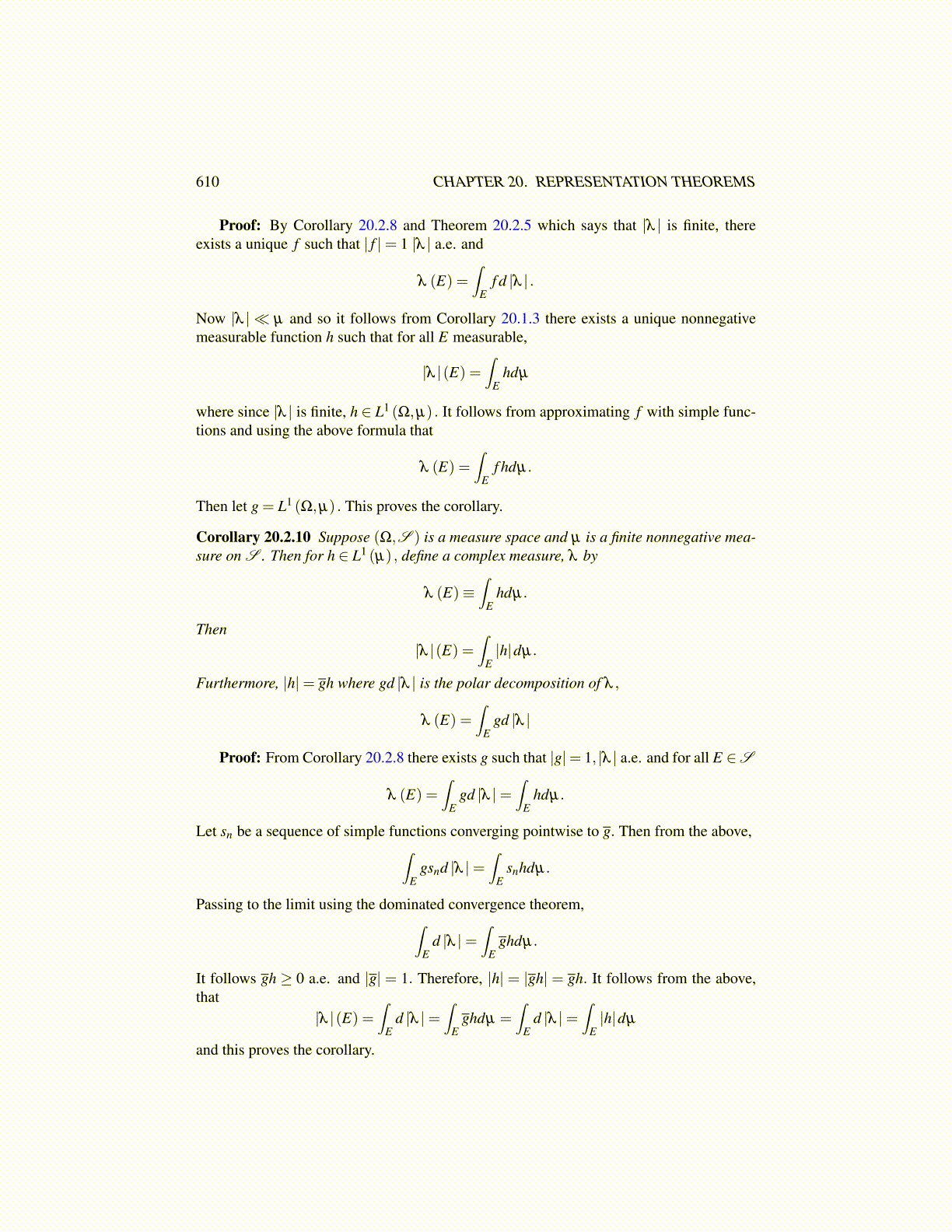
610 CHAPTER 20. REPRESENTATION THEOREMS
Proof: By Corollary 20.2.8 and Theorem 20.2.5 which says that |λ | is finite, thereexists a unique f such that | f |= 1 |λ | a.e. and
λ (E) =∫
Ef d |λ | .
Now |λ | ≪ µ and so it follows from Corollary 20.1.3 there exists a unique nonnegativemeasurable function h such that for all E measurable,
|λ |(E) =∫
Ehdµ
where since |λ | is finite, h ∈ L1 (Ω,µ) . It follows from approximating f with simple func-tions and using the above formula that
λ (E) =∫
Ef hdµ.
Then let g = L1 (Ω,µ) . This proves the corollary.
Corollary 20.2.10 Suppose (Ω,S ) is a measure space and µ is a finite nonnegative mea-sure on S . Then for h ∈ L1 (µ) , define a complex measure, λ by
λ (E)≡∫
Ehdµ.
Then|λ |(E) =
∫E|h|dµ.
Furthermore, |h|= gh where gd |λ | is the polar decomposition of λ ,
λ (E) =∫
Egd |λ |
Proof: From Corollary 20.2.8 there exists g such that |g|= 1, |λ | a.e. and for all E ∈S
λ (E) =∫
Egd |λ |=
∫E
hdµ.
Let sn be a sequence of simple functions converging pointwise to g. Then from the above,∫E
gsnd |λ |=∫
Esnhdµ.
Passing to the limit using the dominated convergence theorem,∫E
d |λ |=∫
Eghdµ.
It follows gh ≥ 0 a.e. and |g| = 1. Therefore, |h| = |gh| = gh. It follows from the above,that
|λ |(E) =∫
Ed |λ |=
∫E
ghdµ =∫
Ed |λ |=
∫E|h|dµ
and this proves the corollary.